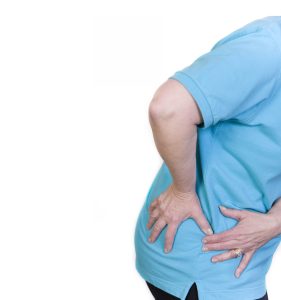Orthobiologics May Be the Answer for Hip Pain for Some Patients
I’m Mark Barba, MD, an orthopedic surgeon, and my specialty is hip and knee replacements. But a big part of what I do is actually fix hip and knee replacements that have gone bad. These are not simple procedures. They’re long, technically involved, and require a massive amount of specialized equipment. It’s not unusual for our operating room tables to hold over a thousand pounds of gear to get the job done.
So why am I telling you all this?
 Well, orthopedic surgeons—me included—tend to be drawn to these big, complex operations. They’re a hallmark of our field and can feed into a natural drive many of us have to tackle major problems. But several years ago, I found myself intrigued by a small problem. One that, frankly, didn’t get much attention during my training, but has become a significant part of my practice and one of the most common sources of pain I see in patients: trochanteric bursitis.
Well, orthopedic surgeons—me included—tend to be drawn to these big, complex operations. They’re a hallmark of our field and can feed into a natural drive many of us have to tackle major problems. But several years ago, I found myself intrigued by a small problem. One that, frankly, didn’t get much attention during my training, but has become a significant part of my practice and one of the most common sources of pain I see in patients: trochanteric bursitis.
Now, “bursitis” is probably a bit of a misnomer. It refers to a constellation of issues that cause pain on the outside of the hip—right over the greater trochanter, that bony point you can feel on the side of your hip. The pain can stay localized, or it can radiate down the thigh or into the buttock.
My interest in this began about 15 years ago when the accountant at our practice sent me his aunt. She was in her mid-70s at the time and had developed a sudden pain while gardening. She told me she couldn’t bear weight—but strangely, not because of pain. It just felt like her hip had no strength. Her hip X-rays were normal, but on the physical exam, she had almost no strength in her gluteal muscles, especially the ones used for walking and bearing weight. Two of these three major muscles attach directly to the trochanter.
I suspected muscle injury. We got an MRI, and sure enough, both muscles were completely torn from the bone.
Now, you’d think as a hip surgeon I’d have seen this before—but I hadn’t. In fact, that might’ve been the first MRI I ever ordered for a non-arthritic hip problem. This was in the mid-2000s when MRIs weren’t routinely used for these complaints. I took her to surgery, reattached the muscles, and after about 12 weeks of healing, she was doing beautifully—no limp, no pain.
That case changed the way I looked at lateral hip pain.
I started ordering more MRIs. And I started seeing it—not always full tears, but partial ones, degeneration, tendon splits. People were showing signs of wear and breakdown in these gluteal muscles and tendons, and it was often the source of their pain. In the right cases, I operated. And the results were rewarding.
But not everyone had a surgical problem. Many had degenerative changes—where the tendons weren’t torn, but they weren’t healthy either. For these people, surgery wouldn’t help, so we’d turn to cortisone injections.
Cortisone works. It’s a strong anti-inflammatory. But it’s also catabolic, meaning it breaks down tissue. That’s the opposite of “anabolic,” which is the type of steroid associated with muscle building. Cortisone, which is naturally produced by your adrenal gland, can suppress your body’s own production if given too often, and it will weaken tendons over time.
So, while a cortisone shot might give you six weeks of relief, it can come at the cost of long-term tendon health. We try not to give them more than every 3–4 months—and even that can be too much for delicate load-bearing tissue like the gluteal tendons.
Physical therapy? Sometimes it helps, but for many people with true tendon degeneration, it can make the pain worse.
That’s where orthobiologics came in.
When I began exploring orthobiologic treatments, I saw a real opportunity to help this exact patient population—people with debilitating lateral hip pain who didn’t have a clean surgical fix.
Orthobiologic treatments like PRP (platelet-rich plasma), fat grafting, or stem cell-derived therapies work not just by reducing inflammation, but by promoting healing in tendon tissue.
And here’s the best part: unlike so many other things in medicine that are driven by clinical intuition without much data, this is an area where we do have high-quality evidence. Level 1 studies (the gold standard in clinical research) show that PRP and similar orthobiologic injections outperform cortisone in both effectiveness and durability—relief that lasts up to two years in many cases.
This is important.
Trochanteric pain affects people’s sleep. It makes it hard to roll over in bed, climb stairs, get in and out of a car, or even enjoy simple pleasures like gardening. If you’re living with this kind of pain, I’d be happy to see you. I’ll examine you, get some X-rays, maybe an MRI, and if orthobiologics are the right fit for your case, we’ll talk about moving forward.
Sometimes it’s not the big operations that change a life, it’s fixing a small problem that no one else has been paying attention to.


